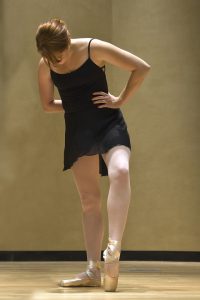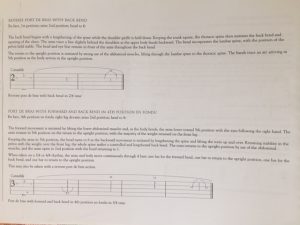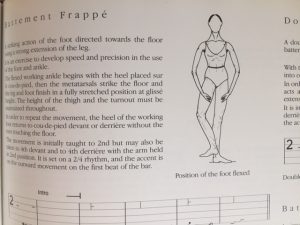 This is a guide for both teachers and students on how to cope with putting advanced ballet steps together in preparation for your major ballet exams.
This is a guide for both teachers and students on how to cope with putting advanced ballet steps together in preparation for your major ballet exams.
This section of the ballet exam is called the free enchainment section, and some dancers really dread this part of the exam, as it places a lot of extra stress on them.
What Is A Free Enchainment?
A free enchainment is a series of ballet steps that the examiner will give to candidates verbally, and then the dancers are expected to perform these sequences of steps with very little practice and get marked on their efforts.
This can be very daunting for teachers and students, as you never know what the examiner is going to ask. Luckily there are some guidelines you can follow, and there is a list of required steps that the candidate must know for each exam.
How To Train Advanced Ballet Steps And Enchainments
Here are some tips to getting through this part of the exam with as little difficulty as possible.
In the RAD syllabus, the Intermediate Foundation, Intermediate and Advanced Foundation levels all have free enchainment in the exam sessions. This section of the exam counts ten percent of your total mark, and an extra bit added to the performance mark.
The best way to prepare pupils for this section of the exam is to ensure they know their vocabulary and steps really well. This means drilling the individual steps and then working on technique, musicality and quality. Make sure teachers – teach each step with a secure build up.
Once the students can perform the step competently and with accurate technique, the step should be used in a series. For example, do a step 7 times and petit assemble and repeat. Then gradually reduce the number of repetitions as the student gets better at doing the step.
Luckily the RAD gives its teachers and pupils guidelines on what focal steps will be asked with what linking steps. This is a great help, but the student will still need to be able to put the steps together quickly in her brain.
Once the students know all the focal steps, work on understanding the linking steps and train them in the same way as you did the focal ones.
Once you start to give them free enchainments, keep them simple so that they can show the steps with technical accuracy. They are rarely very complicated in the exams.
Make sure you give them arms, as they need to be able to coordinate the arms and legs while dancing. Try to use different arms to what you would normally use, as this will train the brain to get used to other ways of doing a step.
In the exam, the candidates will always get to mark the enchainment four times through. Teach your pupils to mark well, but to save their energy for the actual performance, which is also seen four times through. Tell them to use 100 percent of the upper body and head and 50 percent of the lower body when marking.
Remind your students that in the exam they will need to do the enchainment four times, so they mustn’t think they can stop after the second time.
Make sure you leave enough class time to adequately prepare your students for this daunting part of the exam, taking the time to develop the necessary skills, knowledge and understanding.
Advanced Ballet Steps Book – Progressions of Classical Ballet Technique
This book is very useful for all teachers of classical ballet and advanced pupils. It was published by the Royal Academy of Dance and the book explains each step in detail, so there are no doubts on how to perform the steps.
The Progressions of Classical Ballet Technique


You can buy this book online from Amazon, or directly from the Royal Academy of Dance.
It is a must have for all teachers of ballet.
Each step has illustrations and is broken up into individual components.
The Red Progressions of Classical Ballet Technique is intended for a higher level of student, and the blue one is more about the ballet basics.
The red book picks up where The Foundations of Classical Ballet Technique left off, so where, for example, you would find a single pirouette in the first book, this develops into a double pirouette, an embellished pirouette, or a more complex turn like fouette ronde de jambe en tournant.
Students now start to learn all the glorious, fun steps – saute de basque, gargouillades, temps de poisson, renverses, flic-flacs, etc.
All of these steps are broken up and dissected so that the students know precisely what they are trying to achieve. Once the technique has been mastered, the students will begin to find their own way of “feeling” the steps through the movement and the music. As Tamara Karsavina once said, “Remember that the mechanism of the dance becomes artistry only when it is inspired by feeling.”
The Progressions of Classical Ballet Technique is an important, invaluable book full of advanced ballet steps that will help and inspire every advanced teacher, examiner and student. It is a perfect companion to The Blue Foundations of Classical Ballet Technique Book below.
The Foundations of Classical Ballet Technique


Here are some photos of two of the pages in my copy.





